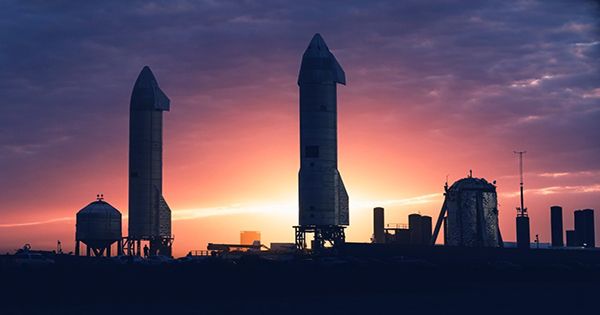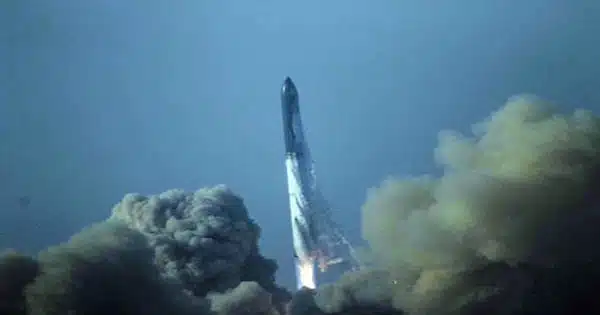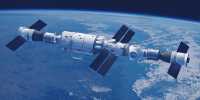Minutes after taking off on its first test flight on Thursday, SpaceX’s massive new rocket caught fire and plummeted into the Gulf of Mexico.
Elon Musk’s business planned to launch the biggest and most potent rocket ever made from the southernmost point of Texas, close to the Mexican border. The 120-meter (almost 400-foot) long Starship was empty of passengers or satellites.
Later, SpaceX said that some of the 33-engine booster’s engines were not burning during the rocket’s ascent, which caused it to lose altitude and start to fall. The rocket’s self-destruct mechanism purposefully destroyed it, causing it to explode and crash into the lake.
Instead of a 1 1/2-hour trip with the spaceship on top ripping away and doing a circuit around the planet, the entire affair lasted four minutes. The rocket attained a top speed of around 1,300 mph (2,100 kph) and a height of 24 miles (39 kilometers) before turning sideways and crashing.
Crowds gathered on South Padre Island, many miles distant from the Boca Chica Beach launch point, which was closed. The audience chanted, “Go, baby, go!” as Starship took off with a tremendous roar.

It was “an exciting test launch of Starship,” Musk wrote in a tweet. A lot was learned for the next test launch.” It was referred to by SpaceX as a “rapid unscheduled disassembly.”
In the weeks prior to takeoff, Musk offered a 50/50 chance that the spaceship would enter orbit. He emphasized that a victory would come from clearing the launch tower and avoiding a pad explosion.
Engineer John Insprucker, a commenter on the SpaceX webcast, remarked, “You never know exactly what’s going to happen.” However, excitement is certain, and Starship provided us with a fantastic ending, as we had promised.
The rocket created massive clouds of sand and dust surrounding the launch site. Particles blanketed automobiles and other surfaces in Port Isabel, about 10 miles (6 kilometers) distant. According to John Sandoval, assistant to the city manager, the only other incident was a smashed glass at a local shop. “Yes, the rocket shook, rattled, and rolled,” he remarked of it.
Despite the fact that there were no reported casualties or damages to public property, the Federal Aviation Administration said that it will oversee the crash investigation. Additionally, the agency said that starships remain grounded until it is certain that there is no danger to the general population.
Starship will be used by SpaceX to transport passengers and freight to the moon and eventually Mars. Rich visitors are already making reservations for lunar flybys, and NASA has secured a Starship for its next moonwalking crew.
Despite the brief trip, Bill Nelson, the director of NASA, and others in the space industry sent their greetings. Chris Hadfield, a retired astronaut from Canada, wrote on Twitter: “Huge accomplishment, huge lessons, onwards to the next attempt.”
“It fell somewhere between a small step and their hoped-for giant leap, but it still represents significant progress toward a reusable super-heavy lift rocket,” said Jordan Bimm, a space historian at the University of Chicago, in an email.
With a height of 394 feet and a force of around 17 million pounds, Starship easily outperforms all NASA moon rockets, past, present, and future. Last November, NASA performed a test mission of its brand-new 322-foot (98-meter) moon rocket, sending an empty Orion spacecraft around the moon.
Similar to what SpaceX’s smaller Falcon rockets have accomplished when they have launched from Cape Canaveral, Florida, the stainless steel Starship rocket is intended to be totally reusable with quick turnaround, drastically cutting costs. Nothing was to be salvaged from this test mission, with the spaceship destined for a watery burial in the Pacific Ocean near Hawaii if everything went according to plan.
During testing a few years ago, the future spaceship sailed many miles into the air, landing successfully only once. However, this was the first launch of the first-stage rocket, which was powered by 33 methane-fueled engines.
For more test flights, SpaceX has additional rockets and spacecraft planned; the following batch is almost complete. Musk intends to launch them quickly one after the other so he can start utilizing Starships to put humans on board satellites and send them into low-Earth orbit.
It was the second attempt at launch. A frozen booster valve caused Monday’s attempt to be abandoned.
While driving from Corpus Christi to see the launch with their daughter, Jason and Lisa Flores were suspicious.
The moment Lisa Flores saw the liftoff, she stopped crying and said, “It’s not working out the way it was supposed to.”
Elizabeth Trujillo, 13, skipped school to watch the launch from the beach with her mother and other relatives, wearing a “Star Wars” shirt and clutching toy binoculars. When Starship cleared the tower, the crowd erupted.
Despite the failure, “it was worth it,” said Elizabeth’s mother, Jessica Trujillo. “Just hearing and seeing the view, as well as the excitement of the crowd, was priceless.”
“Perfect practice makes perfect.” “All they have to do now is practice some more,” she remarked.















